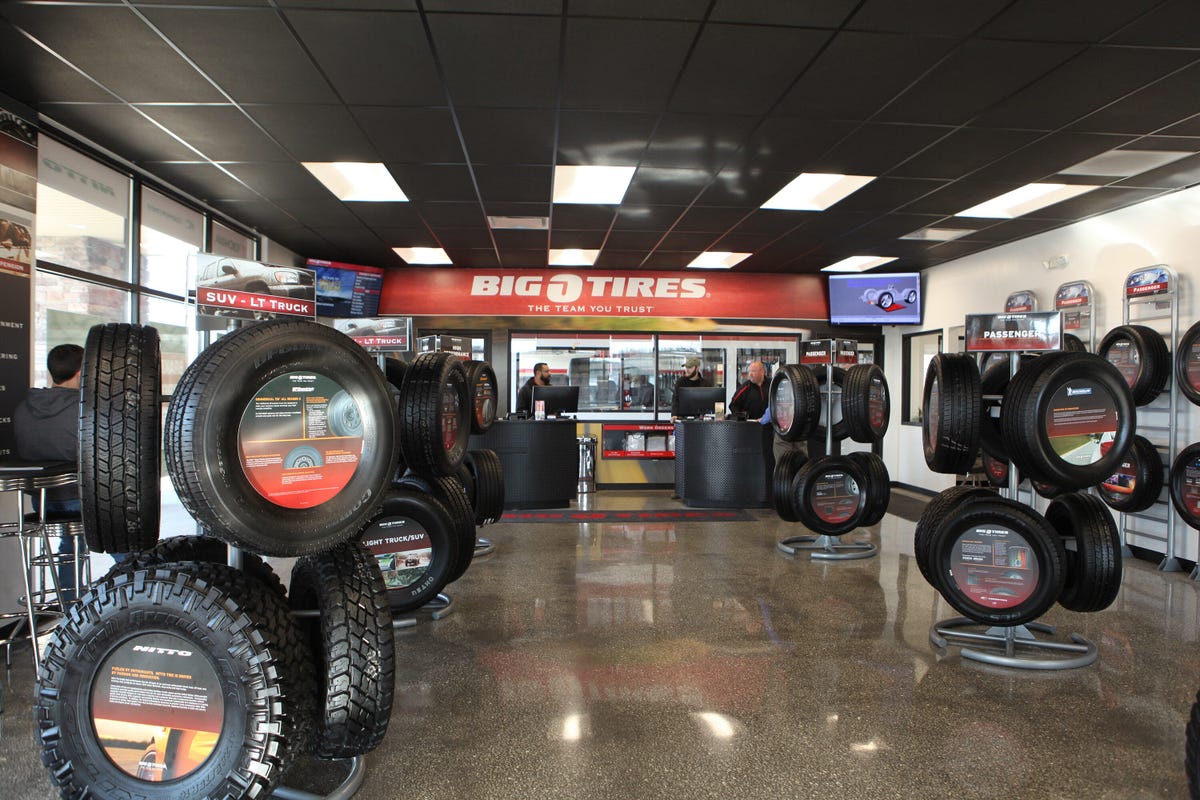Morris Tire Solution: Your Best Location for Discount Tires Morris IL
Morris Tire Solution: Your Best Location for Discount Tires Morris IL
Blog Article
The Science Behind Tire Repair and Security
When it pertains to the elaborate world of tire upkeep and safety, there exists a world of scientific research that typically remains unseen by the ordinary motorist - morris tire. The materials that make up a tire, the impact of tire stress on general safety, the ramifications of step wear, the intricate characteristics of tire traction, and the often-overlooked value of correct wheel positioning all play essential roles in making certain an automobile operates securely and effectively. As we navigate with the intricacies of tire repair and safety, it comes to be apparent that a deeper understanding of these clinical principles is not only beneficial but crucial for each chauffeur when driving
Tire Structure and Functionality
What materials compose the structure of tires, and just how do these components add to their functionality when driving? Tires are intricate items, generally made from a combination of rubber substances, fabric, steel cords, and other chemical ingredients. One of the most common sort of rubber made use of in tires is artificial rubber, which offers toughness and resistance to tear and use. The textile layers, often constructed from rayon, nylon, or polyester, supply stamina and stability to the tire structure. Steel cords are incorporated to boost the tire's stamina and assist it maintain its form under various roadway problems.
The rubber compounds provide grasp and traction, permitting the tire to stick to the road surface and supply security during velocity, braking, and cornering. Generally, the cautious choice and combination of these materials make certain that tires can do effectively and safely on various road surfaces and problems.
Effect of Tire Stress on Safety
Maintaining proper tire stress is essential for making sure optimum safety and efficiency while driving. The impact of tire pressure on safety can not be overemphasized. Underinflated tires are susceptible to overheating, which can result in tire blowouts, particularly at broadband. Furthermore, reduced tire stress influences the handling and responsiveness of the vehicle, enhancing the danger of accidents, specifically during emergency situation maneuvers. On the other hand, overinflated tires have less contact with the roadway surface, lowering grip and creating unequal wear on the tire footsteps. This endangers the vehicle's security and braking performance, posing a considerable safety and security threat. Properly inflated tires additionally play an important duty in gas performance, as underinflated tires can enhance rolling resistance, bring about decreased gas mileage. Regularly examining and maintaining the right tire pressure not only guarantees security yet additionally expands the life expectancy of the tires, reducing replacement prices over time.
Tread Put On and Its Effects
Correct surveillance of tire walk wear is crucial for ensuring optimal efficiency and safety and security when traveling. As tires use down, the depth of the step reduces, decreasing the tire's capability to preserve grip, specifically in damp or slippery problems. The walk pattern and depth play an important duty in funneling water away from the tire to protect against hydroplaning and preserving grip on the roadway surface.
Signs next page of excessive walk wear include bald areas, unequal wear, and the look of wear signs. Hairless spots show local wear, which can cause instability and boosted danger of blowouts. Irregular wear might recommend issues with tire suspension, inflation, or positioning components. Wear signs are built right into the tire step and become visible when the step depth reaches a particular nadir, indicating the demand for prompt substitute.

Understanding Tire Traction Characteristics
Monitoring tire tread wear not just makes certain optimal efficiency and security however additionally directly affects the traction characteristics of the tires on different road surfaces. Tire grip is a critical aspect of lorry handling and safety and security, as it determines the grasp in between the tires and the roadway. Traction dynamics differ relying on road problems such as dry sidewalk, wet roadways, snow, or ice.
Comprehending tire grip dynamics is essential for chauffeurs to adjust their driving behavior according to the road problems. tire shop near me. Frequently checking tire walk depth and condition can significantly improve traction efficiency, guaranteeing more secure driving experiences across different surfaces
Importance of Appropriate Wheel Alignment
Guaranteeing proper wheel alignment plays an essential duty in optimizing lorry efficiency and extending tire longevity. Proper wheel alignment involves adjusting the angles of the wheels to producer my website specs, guaranteeing that they are perpendicular to the ground and alongside each various other. When positioning is off, it can result in unequal tire wear, reduced fuel efficiency, and compromised handling.
One of the key benefits of preserving proper wheel positioning is improved dealing with and stability. Misaligned wheels can trigger the vehicle to draw to one side, impacting guiding control and total driving experience. Furthermore, appropriate positioning promotes even tire wear, protecting against early tire substitute and reducing upkeep costs in the lengthy run.

Conclusion
To conclude, the scientific research behind tire fixing and safety is essential for preserving car efficiency and guaranteeing motorist safety and security. By recognizing tire structure, pressure, tread wear, grip characteristics, and wheel alignment, vehicle drivers can stop crashes and lengthen the lifespan of their tires. Appropriate wikipedia reference upkeep and regular assessments are important for optimum tire performance and overall car safety. By following these guidelines, motorists can drive confidently understanding that their tires remain in good condition.
The materials that make up a tire, the influence of tire pressure on total safety and security, the implications of walk wear, the elaborate characteristics of tire grip, and the often-overlooked relevance of correct wheel positioning all play essential duties in making sure a car runs safely and efficiently. On the various other hand, overinflated tires have much less call with the road surface, lowering traction and causing unequal wear on the tire treads. Frequently checking and keeping the correct tire pressure not just guarantees security but likewise extends the life-span of the tires, conserving on replacement prices in the long run.
Keeping track of tire walk wear not only makes certain optimal efficiency and safety yet additionally directly impacts the traction characteristics of the tires on different roadway surface areas. Tire traction is a crucial element of car handling and safety and security, as it identifies the grip between the tires and the roadway.
Report this page